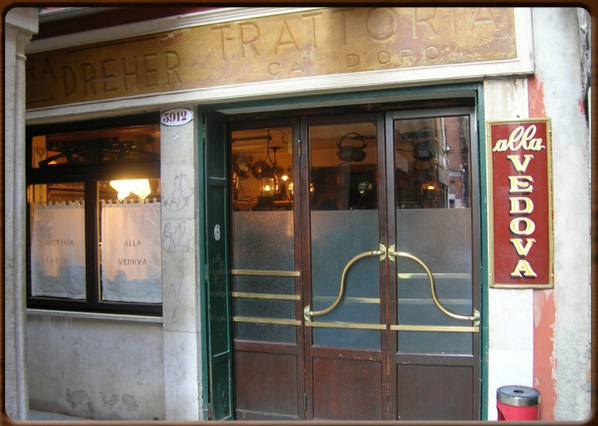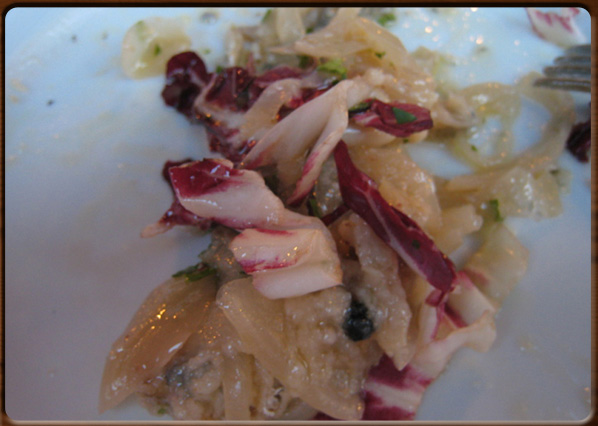
Typical venetian inn.

Sardines "in saor".


No video
Wine and the “osteria” (inn) are an integral part of Venice and the Veneto region’s tradition, history and economy. Documentary sources attest that vines were already being grown in 42 bc, the year the small settlement of Julia Concordia near Venice was founded (now Concordia Sagittaria).
By the 13th Century the Veneto countryside was covered with thriving vineyards, with row upon row of quality vines on the hills and plains. There were even vines growing in St. Mark’s Square. Although the vines have now disappeared, but the cult of wine has always been strong in Venice: in the early 1800s there were more than 1200 taverns and wine shops.
During the Venetian Republic, the inns were also distinguished by the wines they sold: the “malvasie” sold the so-called “navigated wine” from Malvasia (Monemvasia) in the Greek Peloponnese; in the “furatole” simple affordable dishes were served, but not wine; the “bastions” were wine cellars selling plonk, most of the time watered down; the “bacari” (or “bacheri”) were the much appreciated popular haunts of men of culture, writers and musicians, such as Stendhal, Wagner and Goldoni (indeed, Goldoni drew the inspiration for many of his comedies in some of these small inns).
The original osterie are few and far between: authentic bacari are not flamboyent, but simply furnished and often with a sign recalling an event, a place or a particular object. While wine is poured directly from the cask into a carafe, customers play cards or chat, enjoying a “goto” (glass) in company. Venetians also have their own version of the pub crawl known as the “giro de ombre” (literally, "wheel of shadows"), which can even start as early as ten in the morning today as in the past. The expression seems to derive from the fact that the old pedlars needed to keep their wine cool and so would stand their demijohns in the shadow of St. Mark’s bell tower, every now and again shifting them so they stayed in the shade as the sun moved across the sky.
You can enjoy an “ombra” (glass of wine) and taste traditional Venetian cuisine in the osterias today. Typical dishes include the “risi e bisi” (rice with peas), “sarde in soar” (pickled sardines and onion) and “castradina” (dried smoked mutton). Then there are the classic biscuits dating back to the 1600s: “zaleti” (made from maize flour and raisins), plus “fritole” and “galani” eaten during the carnival period. However, in addition to the wine, the osterias also offer you the chance to taste the “cicheti”: small appetizers, ranging from hardboiled eggs with the anchovy to fried cuttlefish, meatballs, pan-fried artichokes, polenta with salt cod and “spienza” (cow’s spleen).
Osterias played an important role in past centuries as a meeting place and heart of social and cultural life in Venice. Today they still keep local communities together in a city suffering from inexorable depopulation.1100 - 1200 - - rev. 0.1.6